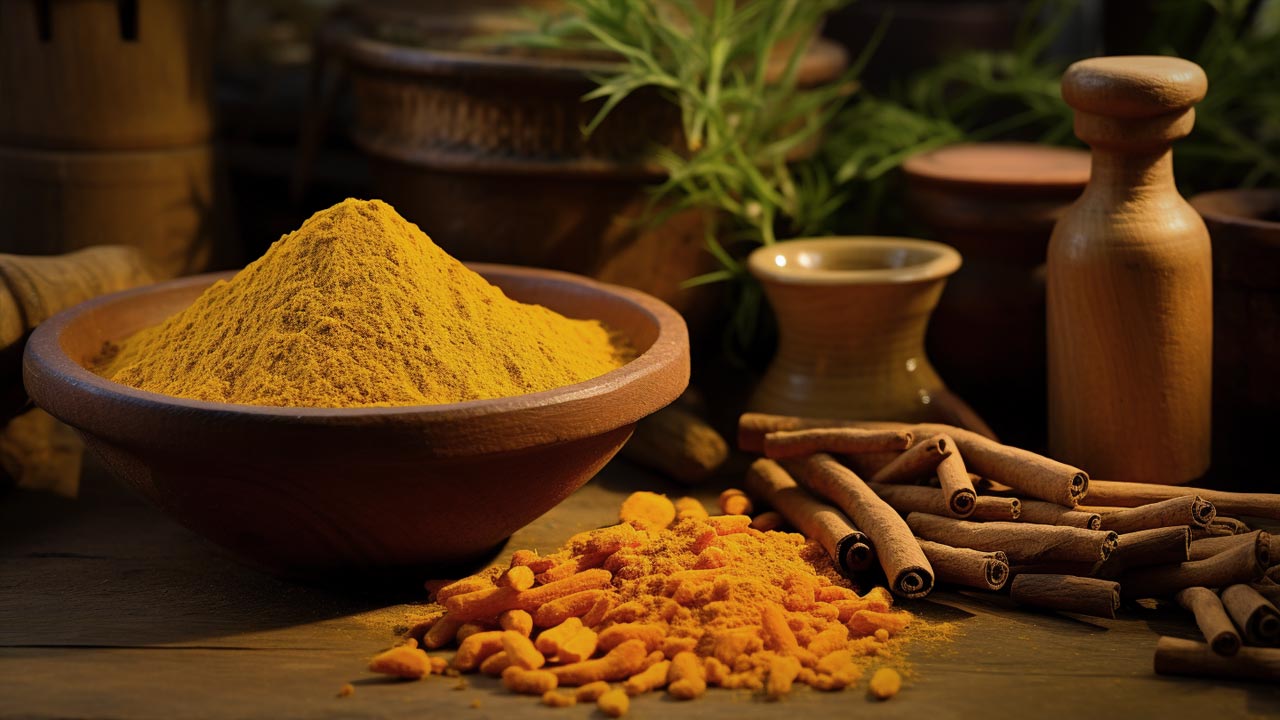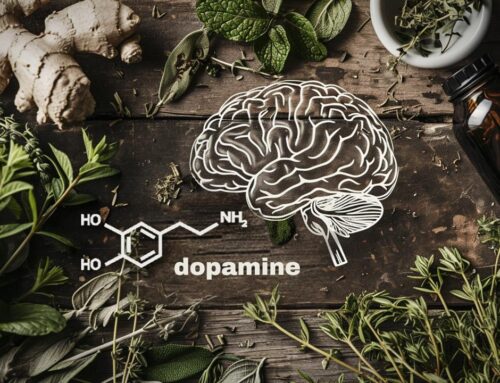Turmeric Herbal Pain Relief
Turmeric, a golden-orange spice, has been a cornerstone in Ayurvedic medicine for centuries, celebrated for its potent anti-inflammatory and analgesic properties. Central to turmeric’s pain-relieving prowess is curcumin, a compound that has garnered attention in modern medicine for its ability to alleviate discomfort across various conditions.
Key Takeaways
- Turmeric’s active compound, curcumin, offers significant anti-inflammatory and pain relief benefits.
- Effective in managing arthritis, osteoarthritis, and post-operative pain.
- A natural alternative to traditional pain medications with fewer side effects.
- Versatile in use, from dietary inclusion to topical application.
Table of Contents
- Turmeric: An Overview
- The Science Behind Turmeric’s Pain Relief
- Turmeric for Specific Pain Conditions
- Turmeric vs. Traditional Pain Medications
- How to Use Turmeric for Pain Relief
- Frequently Asked Questions
- Conclusion
Turmeric: An Overview
Turmeric, a relative of ginger, has been coloring and flavoring foods for centuries. This Asian native plant’s root has long been revered in traditional Chinese and Ayurvedic medicine for its healing properties. Its rich phytonutrients not only add vibrancy to dishes but also arm the body against various health conditions, including pain and inflammation.
The Science Behind Turmeric’s Pain Relief
Turmeric, particularly its active compound curcumin, has gained considerable attention in the scientific community for its potential in pain management. Understanding the science behind this natural remedy involves delving into its biochemical properties and the results of various clinical studies.
Curcumin: The Active Pain-Relieving Agent
- Bioactive Compound: Curcumin, the main active ingredient in turmeric, is responsible for most of its medicinal properties. It’s a polyphenol that imparts the characteristic yellow color to the spice.
- Mechanisms of Action: Curcumin exhibits potent anti-inflammatory and antioxidant activities. It inhibits key molecules that play a role in inflammation, such as cytokines and enzymes like cyclooxygenase-2 (COX-2) and lipoxygenase.
Research and Clinical Studies
- Efficacy in Arthritis: Several studies have shown that curcumin can reduce symptoms of arthritis, a condition characterized by chronic inflammation of the joints. Its effectiveness in reducing joint pain and swelling has been comparable to anti-inflammatory medications.
- Neuropathic Pain Relief: Curcumin has shown promising results in reducing neuropathic pain, which is caused by nerve damage. It appears to modulate pain through its anti-inflammatory action and impact on neural pathways.
- Post-Surgical Pain Management: Research indicates that curcumin can be beneficial in reducing pain and inflammation post-surgery, thereby aiding in quicker recovery and reduced reliance on conventional painkillers.
Absorption and Bioavailability
- Challenge of Bioavailability: One of the challenges with curcumin is its poor bioavailability, meaning it’s not easily absorbed by the body. However, combining it with black pepper, which contains piperine, significantly enhances its absorption.
- Formulations for Improved Efficacy: Various formulations, including nanoparticles, liposomal encapsulations, and turmeric oil, are being studied to improve the delivery and efficacy of curcumin.
Safety and Side Effects
- Generally Safe: Turmeric, when consumed as a spice in food, is generally safe with minimal side effects.
- Considerations for High-Dose Supplements: High doses or long-term use of curcumin supplements can lead to gastrointestinal issues. It’s important to consult with a healthcare provider before starting any supplement regimen, especially for individuals on medication or with pre-existing health conditions.
Ongoing Research
- Expanding Applications: Ongoing research continues to explore the broader therapeutic potential of curcumin, including its role in managing chronic diseases and mental health conditions like depression, where inflammation is a contributing factor.
Turmeric for Specific Pain Conditions
Turmeric’s pain-relief properties have been studied in relation to various specific conditions. Below is an exploration of how turmeric, especially its active component curcumin, contributes to managing pain in different medical scenarios.
Arthritis and Joint Pain
- Osteoarthritis: Turmeric has been widely studied for its effectiveness in osteoarthritis, a common form of arthritis. Research shows that curcumin can help reduce pain and improve joint function in osteoarthritis patients, offering a natural alternative to nonsteroidal anti-inflammatory drugs (NSAIDs).
- Rheumatoid Arthritis: In rheumatoid arthritis, an autoimmune condition, curcumin’s anti-inflammatory properties can help alleviate joint inflammation and pain. Studies have indicated that patients taking curcumin supplements reported significant reductions in joint tenderness and swelling.
Neuropathic Pain
- Mechanism of Action: Curcumin helps in neuropathic pain by modulating pain signaling pathways and reducing inflammation.
- Clinical Evidence: Research, including animal studies, suggests that curcumin can alleviate neuropathic pain caused by conditions like diabetes and spinal cord injury.
Gastrointestinal Pain
- Irritable Bowel Syndrome (IBS): Curcumin has shown potential in managing abdominal pain associated with IBS, reducing inflammation in the gut and improving overall symptoms.
- Inflammatory Bowel Disease (IBD): In conditions like Crohn’s disease and ulcerative colitis, curcumin supplements have been found to help reduce gastrointestinal pain and inflammation.
Post-Operative and Post-Traumatic Pain
- Reducing Inflammation Post-Surgery: Studies indicate that curcumin can be effective in reducing post-operative inflammation and pain, potentially reducing the need for opioid painkillers.
- Sports Injuries: For athletes and individuals with sports injuries, turmeric can be a helpful natural remedy to reduce pain and swelling associated with soft tissue injuries.
Menstrual Pain
- Dysmenorrhea Relief: Curcumin’s antispasmodic properties can help alleviate menstrual cramps, offering a natural option for managing dysmenorrhea.
Chronic Conditions and Cancer-Related Pain
- Effectiveness in Chronic Pain: Curcumin’s long-term anti-inflammatory effects can be beneficial in managing chronic pain conditions.
- Cancer Pain Management: Emerging research suggests that curcumin may also play a role in alleviating pain associated with cancer and cancer treatments, though more research is needed in this area.
Considerations for Use
- Supplementation: While adding turmeric to the diet can provide some benefits, higher doses often found in supplements may be needed for therapeutic effects in specific pain conditions.
- Consultation with Healthcare Professionals: It’s essential for individuals with specific health conditions to consult healthcare professionals before using turmeric as a pain management strategy.
Turmeric vs. Traditional Pain Medications
The comparison between turmeric, particularly its active component curcumin, and traditional pain medications is an area of growing interest. This section explores how turmeric stacks up against conventional pain relief methods, considering efficacy, side effects, and suitability for various conditions.
Efficacy in Pain Relief
- Comparable to NSAIDs: Studies have found that turmeric can be as effective as certain nonsteroidal anti-inflammatory drugs (NSAIDs) in reducing pain and inflammation, especially in conditions like osteoarthritis and rheumatoid arthritis.
- Chronic Pain Management: For long-term pain management, such as in chronic arthritis, turmeric may offer sustained relief without the risks associated with prolonged use of NSAIDs or opioids.
Side Effects and Safety Profile
- Lower Risk of Side Effects: Unlike many traditional painkillers, especially opioids and some NSAIDs, turmeric is generally associated with fewer and less severe side effects.
- Gastrointestinal Tolerance: NSAIDs often lead to gastrointestinal distress or ulcers with long-term use. Turmeric, in contrast, is less likely to cause such issues and may even offer protective benefits for the stomach lining.
Mechanism of Action
- Natural Anti-Inflammatory Pathways: Curcumin in turmeric works by inhibiting key inflammatory pathways in the body, similar to how certain NSAIDs operate, but with a natural and potentially gentler approach.
- Antioxidant Properties: Apart from its anti-inflammatory effects, curcumin also has strong antioxidant properties, offering additional health benefits that most traditional pain medications do not.
Interactions and Contraindications
- Drug Interactions: While turmeric is generally safe, it can interact with certain medications, including blood thinners and diabetes medications. This necessitates a consultation with healthcare providers before starting turmeric supplements.
- Contraindications: People with certain conditions like gallbladder disease or those undergoing surgery should use turmeric cautiously.
Personalized Medicine Approach
- Tailoring Treatment: The choice between turmeric and traditional pain medications can depend on individual factors like the specific pain condition, personal health history, and tolerance for certain medications.
- Supplemental Use: In many cases, turmeric can be used in conjunction with traditional pain medications, offering a complementary approach to pain management.
Ongoing Research and Development
- Emerging Studies: Continuous research is expanding our understanding of how turmeric can be used effectively for pain relief, potentially leading to new formulations and methods of administration that enhance its pain-relieving properties.
For further insights on natural pain relief strategies, check out this in-depth guide on Wild Lettuce as a pain reliever.
How to Use Turmeric for Pain Relief
Turmeric’s versatility in application makes it a valuable natural remedy for pain relief. This expanded section details various methods of incorporating turmeric into daily routines for managing pain, emphasizing practicality and effectiveness.
Dietary Incorporation
- Cooking with Turmeric: Regularly including turmeric in your diet is one of the simplest ways to leverage its pain-relief benefits. It can be added to curries, soups, and rice dishes. Even a pinch of turmeric in everyday meals can make a difference.
- Golden Milk: A traditional Indian drink known as ‘Haldi Doodh,’ involving warm milk mixed with turmeric powder, often sweetened with honey. It’s particularly beneficial for joint pain and inflammation.
Supplements
- Standardized Curcumin Extracts: For more concentrated doses, curcumin supplements are available. These are especially useful for conditions requiring higher curcumin intake than what dietary sources provide.
- Enhanced Formulations: Supplements with added piperine (from black pepper) or in liposomal form can improve curcumin’s bioavailability.
Topical Applications
- Turmeric Pastes and Ointments: Applying turmeric paste to the skin can help alleviate localized pain, such as muscle strains or joint pain. Be mindful of its staining properties.
- Turmeric Oil: Useful for massage, turmeric oil can be applied to painful areas, offering anti-inflammatory benefits and aiding in muscle relaxation.
Turmeric Teas and Beverages
- Turmeric Tea: Steeping turmeric root or powder in hot water to make tea. Adding lemon, honey, or ginger can enhance its flavor and add to its anti-inflammatory properties.
- Turmeric Smoothies: Incorporating turmeric into smoothies is another way to consume it. Mixing it with fruits like mangoes and pineapples can mask its strong flavor.
Special Preparations for Specific Conditions
- Arthritis: Consuming turmeric in meals or as a supplement can help reduce arthritis pain. Turmeric tea can also be a soothing remedy.
- Post-Exercise Muscle Soreness: A turmeric smoothie or a turmeric-infused protein shake after workouts can help in muscle recovery and reducing soreness.
- Menstrual Cramps: Drinking turmeric tea or golden milk can provide relief from menstrual pain due to its antispasmodic effects.
Precautions and Dosage
- Consultation with Healthcare Providers: Before starting any turmeric supplement, especially for pain management, consulting with a healthcare professional is crucial.
- Safe Dosage: While turmeric is safe in culinary amounts, supplements should be used as per recommended dosages on the product or advised by a health professional.
Incorporating turmeric into one’s lifestyle for pain relief can be a holistic approach, offering benefits beyond just alleviating discomfort. Whether used in cooking, as a supplement, or topically, turmeric’s versatility and efficacy make it a valuable component of natural pain management.
Frequently Asked Questions
Conclusion
Turmeric’s journey from a humble kitchen spice to a recognized pain relief agent exemplifies nature’s power in healing. Its natural anti-inflammatory properties offer a promising avenue for those seeking a more holistic approach to pain management.






Leave A Comment